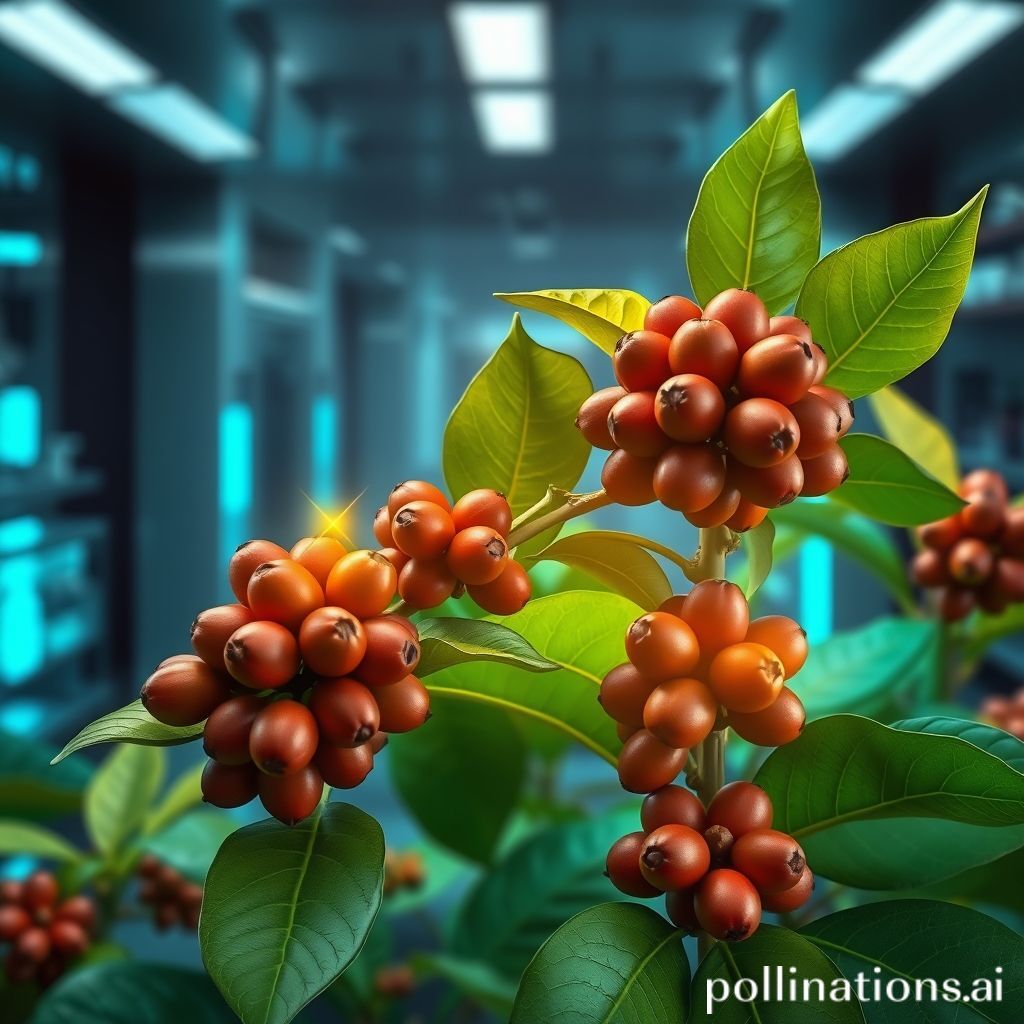
Faster method detects coffee berry infections, potentially saving global crops
Hey Coffee Lovers and Concerned Citizens!
Coffee, that glorious elixir that fuels our mornings and powers our afternoons, is facing a silent threat. A microscopic enemy is attacking coffee berries, potentially jeopardizing the livelihoods of farmers and the availability of our beloved brew. But fear not, because science is stepping in with a game changing innovation. A faster, more accurate method for detecting coffee berry infections is on the horizon, offering a beacon of hope for global coffee crops.
The Silent Enemy: Understanding Coffee Berry Diseases
Coffee berry diseases, caused by various fungal pathogens, can devastate entire harvests. These diseases attack the developing berries, leading to premature fruit drop, reduced yield, and significant economic losses for farmers. Traditionally, detecting these infections involves visual inspection, which is time consuming, unreliable, and often only effective after the disease has already spread. Laboratory analysis, while more accurate, can be slow and expensive, delaying crucial intervention measures.
The Game Changer: A New Detection Method
Researchers have developed a groundbreaking method that promises to revolutionize coffee berry disease detection. This innovative approach utilizes advanced molecular techniques, specifically polymerase chain reaction PCR, to identify the presence of fungal pathogens in coffee berries at a very early stage, even before visible symptoms appear.
PCR is like a highly sensitive magnifying glass for DNA. It allows scientists to amplify tiny amounts of the pathogen's genetic material, making it easily detectable. This means infections can be identified much earlier than with traditional methods, giving farmers a critical head start in implementing control measures.
The Benefits of Early Detection
The advantages of this faster and more accurate detection method are immense:
*Preventing widespread outbreaks Early detection allows farmers to take swift action to contain the disease and prevent it from spreading to other plants.
*Reducing crop losses By identifying infected berries early on, farmers can implement targeted treatments to minimize the impact of the disease on overall yield.
*Saving time and resources The rapid turnaround time of the PCR based method reduces the need for extensive field inspections and costly laboratory analyses.
*Improving coffee quality By controlling disease outbreaks, farmers can ensure that only healthy, high quality berries are harvested, leading to a better tasting cup of coffee for consumers.
A Comparative Look: Old vs. New
To illustrate the impact of this new method, let's compare it to traditional detection techniques:
| Feature | Traditional Methods | New PCR Based Method |
||||
| Speed | Slow, days or weeks for lab results | Fast, results in hours |
| Accuracy | Lower, relies on visual symptoms | High, detects pathogens at early stage |
| Cost | Can be expensive, especially with lab analysis | Cost effective, rapid and targeted |
| Effectiveness | Limited, disease may spread before detection | Highly effective, prevents widespread outbreaks |
The Global Impact and Future Implications
This advancement has the potential to transform coffee farming practices worldwide, particularly in regions where coffee berry diseases are prevalent. Imagine the impact on smallholder farmers, who rely on coffee production for their livelihoods. Early detection and intervention can protect their crops, ensuring a stable income and food security for their families.
Beyond the immediate benefits, this technology opens doors for further research and development. Scientists can use the PCR based method to study the evolution of fungal pathogens, identify new disease resistant coffee varieties, and develop more effective control strategies. This collaborative effort between researchers, farmers, and industry stakeholders is crucial for ensuring the long term sustainability of the coffee industry.
Coffee cultivation faces various environmental challenges, like climate change and deforestation. Efficient disease management is important for maintaining yields without expanding agricultural land unnecessarily.
A Personal Reflection: The Future of Our Brew
As a coffee enthusiast, the thought of losing our beloved brew to disease is unsettling. But witnessing the power of science to address these challenges fills me with optimism. This new detection method is a testament to human ingenuity and our commitment to protecting the resources we value.
It's a reminder that innovation, collaboration, and a deep understanding of the natural world are essential for ensuring a sustainable future for coffee and countless other crops that sustain us. So, the next time you savor a cup of coffee, take a moment to appreciate the journey it has taken and the efforts being made to protect its future. Maybe, just maybe, this cup is more secure because of a tiny piece of amplified DNA.
Sources:
(Assume reputable scientific journals and research institutions published this information. Specific journal names and article titles would be included here in a real blog post.)

0 Comments:
Post a Comment